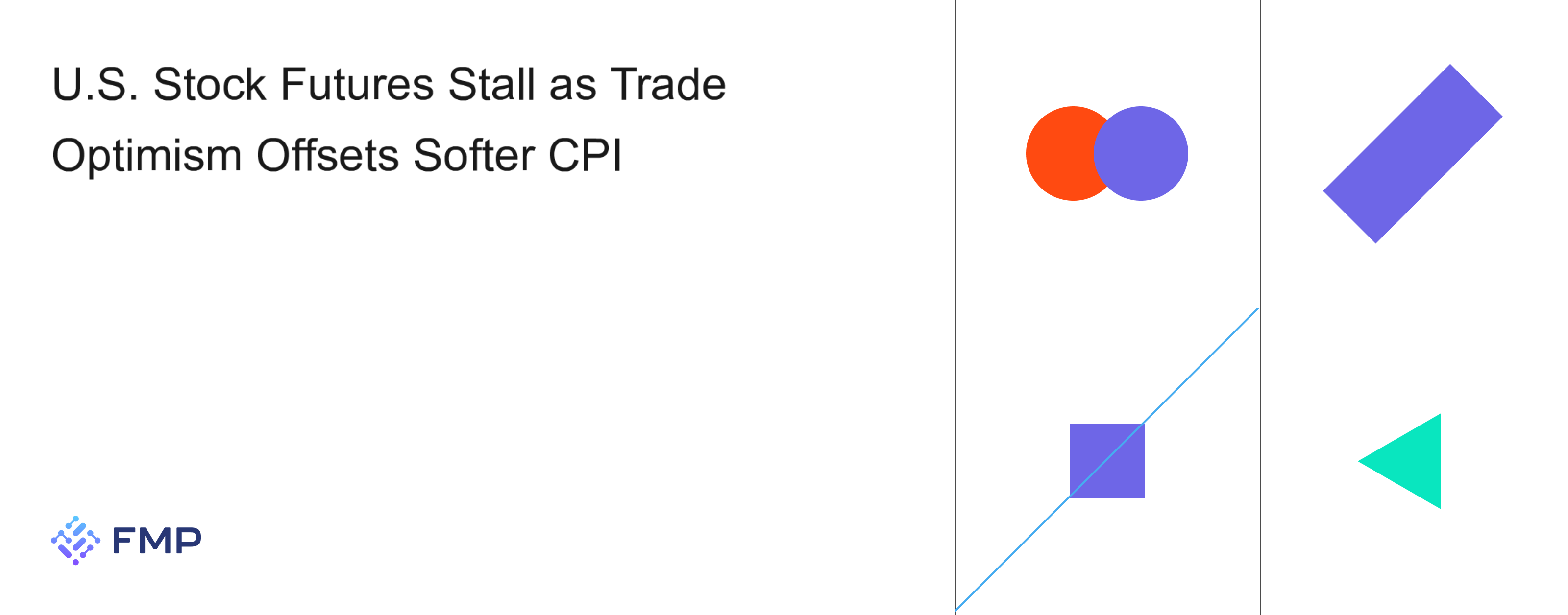
U.S. stock futures were largely unchanged Tuesday evening after gains in the S&P 500 and Nasdaq Composite on optimism around the U.S.–China trade truce were tempered by a slightly softer-than-expected April Consumer Price Index (CPI) report. Traders are weighing near-term relief against lingering uncertainty over where tariffs—and inflation—will ultimately settle.
Futures Reaction: Gains Paused at the Open
S&P 500 Futures: +0.1% to 5,908.0
Nasdaq 100 Futures: Flat at 21,290.5
Dow Jones Futures: +0.1% to 42,265.0
In regular trading, the S&P 500 rose 0.7% and the Nasdaq jumped 1.6%, driven by tech and cyclical names. The Dow, however, fell 0.6% after UnitedHealth Group’s (UNH) 18% sell-off following its forecast suspension and CEO transition.
April CPI: Signs of Cooling, But Core Pressures Linger
April’s headline CPI came in at a 2.3% year-on-year increase—slightly below the 2.4% expected and the slowest since early 2021. Month-on-month, prices rose 0.2% versus a forecast of +0.3%.
Core CPI (excluding food & energy) also climbed 0.2% MoM, under the 0.3% consensus.
Shelter costs accounted for over half of April’s increase, while energy, medical care, and household goods saw modest gains.
The data span the period in which both nations agreed to cut tariffs—U.S. levies on China falling from 145% to 30%, and China’s duties on U.S. goods dropping from 125% to 10% for 90 days.
Sector Outlook: Where to Find the Next Move
With broad indices neutral, sectors with concentrated positioning and recent volatility could lead the next leg higher—or lower. To track how technology, financials, and consumer discretionary have historically reacted to CPI surprises and trade breakthroughs, investors can consult the Sector Historical Market Overview API. This tool provides multi-year sector performance data around key macro events.
What Comes Next
Trade-talk Details: Clarifications on specific tariff rollbacks will drive market conviction.
Fed Commentary: Speeches from Fed officials later this week may signal how inflation data and trade policy shape rate expectations.
Earnings Season: As companies report Q1 results, watch for guidance adjustments tied to tariff costs and input-price pressures.
Until then, investors remain perched between relief over easing trade tensions and caution ahead of further policy signals.

